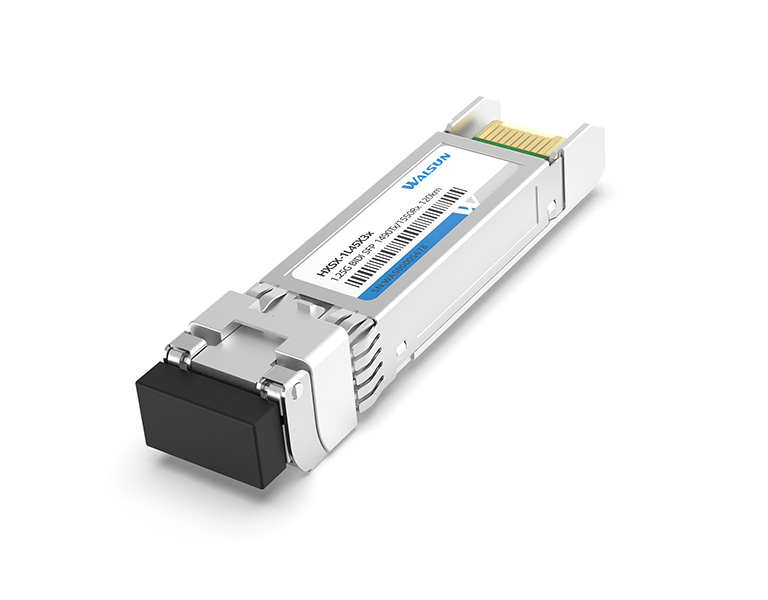
Service For You With All Sincerity

 Knowledge Base +
Knowledge Base +  2024.01.10
2024.01.10The maximum power consumption of SFP (Small Form-Factor Pluggable) modules can vary depending on the specific type of SFP module, its features, and the technology used. SFP modules are available for various applications, including Ethernet, Fiber Channel, and other communication standards, each with its own set of specifications.

As of my last knowledge update in January 2022, the power consumption of an SFP module is typically specified in the module's datasheet. Here are some general considerations:
Low-Power SFP (LPSFP):
Some SFP modules are designed as low-power variants, and they are often labeled as "LPSFP" or "Low Power SFP." These modules are optimized for reduced power consumption compared to standard SFP modules.
Power Classes:
SFP modules are often classified into different power classes, such as Class 1, Class 2, and so on. These classes correspond to different power consumption levels, and the specific class designation is mentioned in the module's datasheet.
Distance and Data Rate:
The power consumption of an SFP module may be influenced by factors such as the supported data rate and the distance over which it is transmitting. Modules designed for longer distances or higher data rates may consume more power.
Digital Diagnostics (DDM/DDMI):
SFP modules with Digital Diagnostics Monitoring (DDM) or Digital Diagnostic Monitoring Interface (DDMI) capabilities may have slightly higher power consumption due to the additional electronics for monitoring and reporting parameters like temperature and optical power.
To obtain accurate information about the maximum power consumption of a specific SFP module, it is essential to refer to the module's datasheet provided by the manufacturer. The datasheet will provide detailed information about the electrical characteristics, power consumption, and other relevant specifications.
Since technology evolves, it's advisable to check the latest documentation and specifications for the most up-to-date information, especially if you are working with recently released SFP modules.
SFP module comes in various types on the basis of different classification standards. It works with copper Ethernet cables or fiber optical cables.
On the fiber optics side, there are single mode SFP module and multimode SFP module, which allows users to select the appropriate transceiver according to the required optical range for the network. Operation wavelength ranges from 850nm to 1550nm. Commonly, 850nm SFP can reach up to 550 meters with multimode fiber optics, and the 1550nm SFP supports up to a maximum of 160km via single mode fiber cables. On the other hand, copper SFP modules primarily are 1000BASE-T SFP and 1000BASE-TX SFP modules, which are excellent used in gigabit Ethernet networking within 100 meters.
More about Types of SFP transceivers
SFP and SFP+ are applied at different transmission speeds. SFP module supports 1Gb data rate, and the SFP type includes 1000base-T/TX, 1000base-SX, 1000base-LX/LX10, 1000base-BX10, 1000base-LX/LH, 1000base-EX, 1000base-ZX and so on.
SFP+ is used in 10-gigabit Ethernet applications but shares the same form factor with SFP. In the SFP+ family, there are primarily SFP+ SR, SFP+ LR, and SFP+ ZR modules for 10 Gigabit ethernet networking.
More about SFP vs Advanced SFP+/SFP28/QSFP/QSFP28
Compatibility is often the most important parameter users care about when buying an MSA SFP module. MSA (multi-source agreement) is an agreement supported by a number of manufacturers who came together to collaborate and standardize the fit-form and try to provide a reliable mean of mixing and matching SFP brands successfully. Third-party companies also have developed their own tools to program SFP modules to be compatible with the OEM. So, the MSA compatibility Gigabit SFP module can be used successfully in most networks.
In many cases, the SFP+ port accepts SFP optics, but the speed will be down to 1G instead of 10G. However, SFP+ optics can not be plugged into the SFP port, because SFP+ does not support speed under 1G. In addition, almost all SFP+ ports on Cisco switches can support SFPs, but many SFP+ ports of Brocade switch only support SFP+ optics.
Generally, they are not interchangeable. 1000Base SX and LX are two optics standards with different operation wavelengths.1000Base LX SFP transceiver usually operates at 1310nm and uses single-mode fiber to connect, while 1000Base-SX usually is 850nm SFP and works with multimode fiber.
Of course, you can. Link aggregation provides benefits like increased bandwidth, redundancy, and load-balancing. That will ensure that one link can immediately switch to a second available link when it fails. Therefore, aggregation on SFP ports is critical for enterprise networks where performance and security are more important. But note that, before connecting the SFP ports, please make sure that the switches have been configured for link aggregation. Otherwise, it will cause network loops.
Subscribe to the newsletter
for all the latest updates.
2-5# Building, Tongfuyu Industrial Zone, Aiqun Road, Shiyan Street, Baoan District, Shenzhen. China
Copyright © 2023 Walsun Inc. All Rights Reserved.
Professional high-speed optical transceiver module overall solution provider


 CHS
CHS Walsun Mall
Walsun Mall